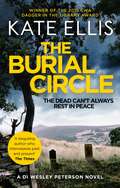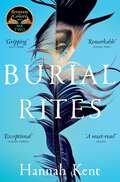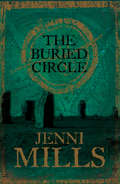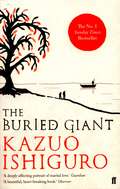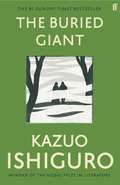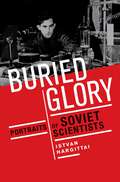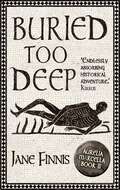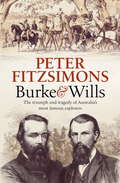- Table View
- List View
The Burghs and Parliament in Scotland, c. 1550–1651
by Alan R. MacDonaldExisting studies of early modern Scotland tend to focus on the crown, the nobility and the church. Yet, from the sixteenth century, a unique national representative assembly of the towns, the Convention of Burghs, provides an insight into the activities of another key group in society. Meeting at least once a year, the Convention consisted of representatives from every parliamentary burgh, and was responsible for apportioning taxation, settling disputes between members, regulating weights and measures, negotiating with the crown on issues of concern to the merchant community. The Convention's role in relation to parliament was particularly significant, for it regulated urban representation, admitted new burghs to parliament, and co-ordinated and oversaw the conduct of the burgess estate in parliament. In this, the first full-length study of the burghs and parliament in Scotland, the influence of this institution is fully analysed over a one hundred year period. Drawing extensively on local and national sources, this book sheds new light upon the way in which parliament acted as a point of contact, a place where legislative business was done, relationships formed and status affirmed. The interactions between centre and localities, and between urban and rural elites are prominent themes, as is Edinburgh's position as the leading burgh and the host of parliament. The study builds upon existing scholarship to place Scotland within the wider British and European context and argues that the Scottish parliament was a distinctive and effective institution which was responsive to the needs of the burghs both collectively and individually.
The Burglar Caught by a Skeleton: And Other Singular Tales from the Victorian Press
by Jeremy ClayHOLIDAYMAKER FIGHTS OFF AFRICAN LION IN WELSH HOTEL ROOM MAN SWALLOWS MOUSE AND DIES WIFE DRIVEN MAD BY HUSBAND TICKLING FEET PALLBEARER KILLED BY COFFIN IN GRAVEYARD LIBERALS EAT DOG From the newspaper archives of the British Library, Jeremy Clay has unearthed the long-lost stories that enthralled and appalled Victorian Britain. Within these pages are the riotous farces and tragedies of nineteenth-century life, a time when life was hard, pleasures short-lived, and gloating over other people’s misfortune a thoroughly acceptable form of entertainment. Deliciously dreadful and deliriously funny, The Burglar Caught by a Skeleton will have you, one way or another, in tears.
Burgos in the Peninsular War, 1808-1814: Occupation, Siege, Aftermath (War, Culture and Society, 1750-1850)
by C. Esdaile P. FreemanFor a full month in the autumn of 1812 the 2,000-strong garrison of the fortress the French had constructed to overawe the city of Burgos defied the Duke of Wellington. In this work a leading historian of the Peninsular teams up with a leading conflict archaeologist to examine the reasons for Wellington's failure.
The Burgundians: A Vanished Empire
by Bart Van LooA masterful history of the great dynasty of the Netherlands' Middle Ages. 'A sumptuous feast of a book' The Times, Books of the Year 'Thrillingly colourful and entertaining' Sunday Times 'A thrilling narrative of the brutal dazzlingly rich wildly ambitious duchy' Simon Sebag Montefiore 5 stars! Daily Telegraph 'A masterpiece' De Morgen 'A history book that reads like a thriller' Le SoirAt the end of the fifteenth century, Burgundy was extinguished as an independent state. It had been a fabulously wealthy, turbulent region situated between France and Germany, with close links to the English kingdom. Torn apart by the dynastic struggles of early modern Europe, this extraordinary realm vanished from the map. But it became the cradle of what we now know as the Low Countries, modern Belgium and the Netherlands. This is the story of a thousand years, a compulsively readable narrative history of ambitious aristocrats, family dysfunction, treachery, savage battles, luxury and madness. It is about the decline of knightly ideals and the awakening of individualism and of cities, the struggle for dominance in the heart of northern Europe, bloody military campaigns and fatally bad marriages. It is also a remarkable cultural history, of great art and architecture and music emerging despite the violence and the chaos of the tension between rival dynasties.
Burial and Death in Colonial North America: Exploring Interment Practices and Landscapes in 17th-Century British Settlements (Emerald Points)
by Robyn S. LacyWhile late 17th- and 18th-century burial grounds of colonial North America are frequently the subject of research, wide-scale studies of 17th-century burial landscapes are often the less documented aspect of these sites. This book aims to fill some of that gap by exploring the relationships and organization of early British colonial burial grounds within the context of their own settlements and the wider northeast coast. Early settlers immigrated to North America for many reasons, and there, away from the Church of England, they could freely explore their relationship with their faith, community and death, represented today through the organization of their burial landscapes and burial practices. By studying the relationship between burial grounds and their associated settlements, we gain a more holistic understanding of how settlers related to, interpreted, and ultimately handled the reality of human mortality. This book examines the organization of 40 burial grounds founded by British settlers on the northeast coast of North America in the 17th century, with the intention of identifying trends in burial ground organization during this period of early colonization. The results can be applied to archaeological or historical research on colonial settlements that have not yet located their earliest burial ground. The book expands the current knowledge base of settler relationships with mortality through the physical placement of burials and interaction with burial landscapes within their new settlements.
Burial and Death in Colonial North America: Exploring Interment Practices and Landscapes in 17th-Century British Settlements (Emerald Points)
by Robyn S. LacyWhile late 17th- and 18th-century burial grounds of colonial North America are frequently the subject of research, wide-scale studies of 17th-century burial landscapes are often the less documented aspect of these sites. This book aims to fill some of that gap by exploring the relationships and organization of early British colonial burial grounds within the context of their own settlements and the wider northeast coast. Early settlers immigrated to North America for many reasons, and there, away from the Church of England, they could freely explore their relationship with their faith, community and death, represented today through the organization of their burial landscapes and burial practices. By studying the relationship between burial grounds and their associated settlements, we gain a more holistic understanding of how settlers related to, interpreted, and ultimately handled the reality of human mortality. This book examines the organization of 40 burial grounds founded by British settlers on the northeast coast of North America in the 17th century, with the intention of identifying trends in burial ground organization during this period of early colonization. The results can be applied to archaeological or historical research on colonial settlements that have not yet located their earliest burial ground. The book expands the current knowledge base of settler relationships with mortality through the physical placement of burials and interaction with burial landscapes within their new settlements.
The Burial Circle: Book 24 in the DI Wesley Peterson crime series (Wesley Peterson #24)
by Kate EllisThe dead don't always rest in peace . . . On a stormy night in December, a tree is blown down on an isolated Devon farm. And when the fallen tree is dragged away a rucksack is found caught amongst the roots - and next to it is a human skeleton.The discovery of the body and the rucksack revives memories for DI Wesley Peterson. A young hitchhiker who went missing twelve years ago was last seen carrying a similar backpack. Suddenly a half-forgotten cold case has turned into a murder investigation.Meanwhile, in the nearby village of Petherham, a famous TV psychic is found dead in suspicious circumstances whilst staying at a local guesthouse. Wesley's friend, archaeologist Neil Watson, is studying Petherham's ancient mill and uncovering the village's sinister history. Could the string of mysterious deaths in Petherham over a hundred years ago be connected to the recent killings? As Wesley digs deeper into the case, it seems that the dark whisperings of a Burial Circle in the village might not be merely legend after all . . .The brand new crime novel in the DI Wesley Peterson series from Kate Ellis, the award-winning author of the 2019 CWA Dagger in the Library. Praise for Kate Ellis's gripping mysteries:'A beguiling author who interweaves past and present' The Times'Haunting' Independent'I loved this novel . . . a powerful story of loss, malice and deception' Ann Cleeves'Unputdownable' Bookseller'The chilling plot will keep you spooked and thrilled to the end' Closer'A fine storyteller, weaving the past and present in a way that makes you want to read on' Peterborough Evening Telegraph
The Burial Plot: The bewitching, seductive new gothic thriller from the author of The Doll Factory
by Elizabeth MacnealShe wants him. He'll take everything.'I genuinely could not put this down' Stacey Halls'A tour de force of a gothic thriller. I devoured it' Gillian McAllister'Taut, propulsive, beautifully done' Susan Stokes-ChapmanFrom Elizabeth Macneal, the Sunday Times bestselling author of The Doll Factory, The Burial Plot is a spellbinding Gothic thriller about murder and manipulation. London, 1839. With the cemeteries full and money to be made in death, tricksters Crawford and Bonnie survive on wicked schemes and ill-gotten coin. But one blistering evening, their fortunes flip. A man lies in a pool of blood at Bonnie’s feet and now she needs to disappear.Crawford secures her a position as lady’s maid in a grand house on the Thames. As Bonnie comes to understand the family – the eccentric Mr Moncrieff, obsessively drawing mausoleums for his dead wife, and their peculiar daughter Cissie, scribbling imaginary love letters to herself – she begins to question what secrets are lying behind the house’s paper-thin walls and whether her own presence here was planned from the beginning.Because Crawford is watching, and perhaps he is plotting his greatest trick yet . . .
Burial Rites: The BBC Between the Covers Book Club Pick (Picador Collection #120)
by Hannah KentBBC Between the Covers Book Club pick!Set against Iceland's stark landscape, Hannah Kent brings to vivid life the story of Agnes, who is charged with the brutal murder of her former master.'Outstanding' – Madeline Miller- The Women's Prize for Fiction Shortlist - The Guardian First Book Award Shortlist- The International IMPAC Dublin Literary Awards ShortlistIceland, 1829 – Agnes Magnúsdóttir is condemned to death for her part in the murder of her lover.Agnes is sent to wait out her final months on the farm of district officer Jón Jónsson, his wife and their two daughters. Horrified to have a convicted murderer in their midst, the family avoid contact with Agnes. Only Tóti, the young assistant priest appointed Agnes’s spiritual guardian, is compelled to try to understand her. As the year progresses and the hardships of rural life force the household to work side by side, Agnes’s story begins to emerge and with it the family’s terrible realization that all is not as they had assumed.Based on actual events, Burial Rites is an astonishing and moving novel about the truths we claim to know and the ways in which we interpret what we’re told. In beautiful, cut-glass prose, Hannah Kent portrays Iceland’s formidable landscape, in which every day is a battle for survival, and asks, how can one woman hope to endure when her life depends upon the stories told by others?Inspired by a true story, Burial Rites is perfect for fans of Alias Grace by Margaret Atwood and The Wonder by Emma Donoghue'Sublime' – Sunday Telegraph'One of the most gripping, intriguing and unique books I’ve read this year' – Kate Mosse
The Buried Circle
by Jenni MillsAn intriguing literary thriller, ‘The Buried Circle' is a gripping blend of fact and fiction that is impossible to put down.
The Buried Giant
by Kazuo IshiguroThe extraordinary new novel from the author of Never Let Me Go and the Booker Prize winning The Remains of the Day The Romans have long since departed, and Britain is steadily declining into ruin. But at least the wars that once ravaged the country have ceased. The Buried Giant begins as a couple, Axl and Beatrice, set off across a troubled land of mist and rain in the hope of finding a son they have not seen for years. They expect to face many hazards - some strange and other-worldly - but they cannot yet foresee how their journey will reveal to them dark and forgotten corners of their love for one another. Sometimes savage, often intensely moving, Kazuo Ishiguro's first novel in a decade is about lost memories, love, revenge and war.
The Buried Giant: A Novel (Vintage International Ser.)
by Kazuo IshiguroAn extraordinary new novel from the author of Never Let Me Go and the Booker Prize winning The Remains of the Day'You've long set your heart against it, Axl, I know. But it's time now to think on it anew. There's a journey we must go on, and no more delay...'The Buried Giant begins as a couple set off across a troubled land of mist and rain in the hope of finding a son they have not seen in years.Sometimes savage, often intensely moving, Kazuo Ishiguro's first novel in a decade is about lost memories, love, revenge and war.
Buried Glory: Portraits of Soviet Scientists
by Istvan HargittaiMoscow's Novodevichy Cemetery is the final resting place of some of Russia's most celebrated figures, from Khrushchev and Yeltsin to Anton Chekhov, Sergei Eisenstein, Nikolai Gogol, and Mikhail Bulgakov. Using this famed cemetery as symbolic starting point, Buried Glory profiles a dozen eminent Soviet scientists-nine of whom are buried at Novodevichy-men who illustrate both the glorious heights of Soviet research as well as the eclipse of science since the collapse of the USSR. Drawing on extensive archival research and his own personal memories, renowned chemist Istvan Hargittai bring these figures back to life, placing their remarkable scientific achievements against the tense political backdrop of the Cold War. Among the eminent scientists profiled here are Petr L. Kapitza, one of the most brilliant representatives of the great generation of Soviet physicists, a Nobel-Prize winner who risked his career-and his life-standing up for fellow scientists against Stalin. Yulii B. Khariton, who ran the highly secretive Soviet nuclear weapons laboratory, Arzamas-16, despite being Jewish and despite the fact that his father Boris had been sent to the labor camps. And Andrei D. Sakharov, the "father of the Soviet hydrogen bomb" and a brilliant fighter for human rights, for which he won the Nobel Peace Prize. Along the way, Hargittai shines a light on the harrowing conditions under which these brilliant researchers excelled. Indeed, in the post-war period, Stalin's anti-Semitism and ongoing anti-science measures devastated biology, damaged chemistry, and nearly destroyed physics. The latter was saved only because Stalin realized that without physics and physicists there could be no nuclear weapons. The extraordinary scientific talent nurtured by the Soviet regime belongs almost entirely to the past. Buried Glory is both a fitting tribute to these great scientists and a fascinating account of scientific work behind the Iron Curtain.
Buried Glory: Portraits of Soviet Scientists
by Istvan HargittaiMoscow's Novodevichy Cemetery is the final resting place of some of Russia's most celebrated figures, from Khrushchev and Yeltsin to Anton Chekhov, Sergei Eisenstein, Nikolai Gogol, and Mikhail Bulgakov. Using this famed cemetery as symbolic starting point, Buried Glory profiles a dozen eminent Soviet scientists-nine of whom are buried at Novodevichy-men who illustrate both the glorious heights of Soviet research as well as the eclipse of science since the collapse of the USSR. Drawing on extensive archival research and his own personal memories, renowned chemist Istvan Hargittai bring these figures back to life, placing their remarkable scientific achievements against the tense political backdrop of the Cold War. Among the eminent scientists profiled here are Petr L. Kapitza, one of the most brilliant representatives of the great generation of Soviet physicists, a Nobel-Prize winner who risked his career-and his life-standing up for fellow scientists against Stalin. Yulii B. Khariton, who ran the highly secretive Soviet nuclear weapons laboratory, Arzamas-16, despite being Jewish and despite the fact that his father Boris had been sent to the labor camps. And Andrei D. Sakharov, the "father of the Soviet hydrogen bomb" and a brilliant fighter for human rights, for which he won the Nobel Peace Prize. Along the way, Hargittai shines a light on the harrowing conditions under which these brilliant researchers excelled. Indeed, in the post-war period, Stalin's anti-Semitism and ongoing anti-science measures devastated biology, damaged chemistry, and nearly destroyed physics. The latter was saved only because Stalin realized that without physics and physicists there could be no nuclear weapons. The extraordinary scientific talent nurtured by the Soviet regime belongs almost entirely to the past. Buried Glory is both a fitting tribute to these great scientists and a fascinating account of scientific work behind the Iron Curtain.
Buried in the Bitter Waters: The Hidden History of Racial Cleansing in America
by Elliot Jaspin"Leave now, or die!” Those words-or ones just as ominous-have echoed through the past hundred years of American history, heralding a very unnatural disaster-a wave of racial cleansing that wiped out or drove away black populations from counties across the nation. While we have long known about horrific episodes of lynching in the South, this story of racial cleansing has remained almost entirely unknown. These expulsions, always swift and often violent, were extraordinarily widespread in the period between Reconstruction and the Depression era. In the heart of the Midwest and the Deep South, whites rose up in rage, fear, and resentment to lash out at local blacks. They burned and killed indiscriminately, sweeping entire counties clear of blacks to make them racially "pure.” Many of these counties remain virtually all-white to this day. In Buried in the Bitter Waters, Pulitzer Prize-winning journalist Elliot Jaspin exposes a deeply shameful chapter in the nation's history-and one that continues to shape the geography of race in America.
Buried in the Bitter Waters: The Hidden History of Racial Cleansing in America
by Elliot Jaspin"Leave now, or die!" Those words-or ones just as ominous-have echoed through the past hundred years of American history, heralding a very unnatural disaster-a wave of racial cleansing that wiped out or drove away black populations from counties across the nation. While we have long known about horrific episodes of lynching in the South, this story of racial cleansing has remained almost entirely unknown. These expulsions, always swift and often violent, were extraordinarily widespread in the period between Reconstruction and the Depression era. In the heart of the Midwest and the Deep South, whites rose up in rage, fear, and resentment to lash out at local blacks. They burned and killed indiscriminately, sweeping entire counties clear of blacks to make them racially "pure." Many of these counties remain virtually all-white to this day. In Buried in the Bitter Waters, Pulitzer Prize-winning journalist Elliot Jaspin exposes a deeply shameful chapter in the nation's history-and one that continues to shape the geography of race in America.
Buried Lives: The Protestants of Southern Ireland
by Robin BuryThe early twentieth century saw the transformation of the southern Irish Protestants from a once strong people into an isolated, pacified community. Their influence, status and numbers had all but disappeared by the end of the civil war in 1923 and they were to form a quiescent minority up to modern times. This book tells the tale of this transformation and their forced adaptation, exploring the lasting effect that it had on both the Protestant community and the wider Irish society and investigating how Protestants in southern Ireland view their place in the Republic today.
Buried Secrets: Truth and Human Rights in Guatemala
by V. SanfordBetween the late 1970s and the mid 1980s, Guatemala was torn by a civil war which came to be known as La Violencia. During this time of mass terror and extreme violence, more than 600 massacres occurred in villages destroyed by the army, one and a half million people were displaced, and more than 200,000 civilians murdered. 83% of the victims were Maya, the indigenous people of Guatemala. Buried Secrets brings these chilling statistics to life as it chronicles the journey of Mayan survivors seeking truth, justice, and community healing and demonstrates that the Guatemalan army carried out a systematic and intentional genocide against the Maya. Victoria Sanford provides us with an insider's look at the workings of the Commission for Historical Clarification through the exhumation of clandestine cemeteries. The book is based on exhaustive research, including more than 400 testimonies from massacre survivors, interviews with members of the forensic team, human rights leaders, high-ranking military officers, guerrilla combatants, and government officials. Buried Secrets traces truth-telling and political change from isolated Maya villages to national political events, and provides a unique look into the experiences of Maya survivors as they struggle to rebuild their communities and lives.
The Buried Spitfires of Burma: A ‘Fake’ History
by Andy Brockman Tracy SpaightRumours of buried Spitfires from the Second World War have spread around the world for seventy-five years, fuelling dreams of treasure hunting and watching the iconic aircraft fly again. In April 2012, the press reported that British Prime Minister David Cameron had negotiated an agreement with Myanmar President Thein Sein for the recovery and repatriation of twenty crated Spitfires, reportedly buried at RAF Mingaladon, Yangon, after the Second World War. Astonishingly the agreement came about through the single-minded determination of an ordinary Lincolnshire farmer, David Cundall. After months of negotiation, in January 2013 the excavation begins. Armed with a high-tech survey showing mysterious shapes under the sun-baked surface of Yangon International Airport, David’s expedition is equipped with state-of-the-art JCB excavators, led by a team of archaeologists, and supported by Wargaming.net. Nothing can stop him from recovering the iconic aircraft because, as David tells the world’s media, ‘it’s impossible to make up this story’. But instead of Spitfires, the team unearths a tale of fake history, highlighting the conflict between those want to believe legends and those who demand evidence and the truth. The Buried Spitfires of Burma explores what happened next as David Cundall’s dream unravelled over the course of a historical ‘whodunnit’ that spans seven decades and three continents. In so doing, it follows one of the most bizarre, colourful, and off-the-wall stories since the sensational Hitler Diaries hoax astonished the world in 1983.
Buried Too Deep: An Aurelia Marcella Roman Mystery (An Aurelia Marcella Mystery #3)
by Jane FinnisWELCOME TO ROMAN BRITAIN. It is almost fifty years since the legions invaded but Britannia is still a raw, frontier province. Tensions run high, especially in the north, where Aurelia Marcella, a young Roman woman fled from the ruins of Pompeii, runs the Oak Tree Inn on the road to York. BURIED TOO DEEP. The spring of 98 AD is a time of optimism and business is brisk at Aurelia Marcella's inn on the road to York in Britannia. Then a wagon arrives bearing a local farmer seeking treatment for a grievous sword wound. Before the farmer dies, he tells Aurelia his family is in grave danger and hints that her sister's family, living near him, is threatened too. Aurelia sends for her twin brother Lucius, who is a government investigator. Together they head for the eastern coast to find out more, and to check out a shipwreck bearing valuable official cargo. A band of piratical Gauls is working the area – are they cover for something worse?
Burke and Hare: The Year of the Ghouls
by Brian Bailey'My Lord, You are aware that, at this moment, the public feeling is strongly excited against the perpetrators of the late foul and cold blooded murders that have taken place in the very centre of a populous and civilised city . . . Your Lordship is aware, that in all civilized nations, blood calls for blood . . .'From ' Letter to the Lord Advocate . . . By The Echo of Surgeons' Square'Early nineteenth century Edinburgh was gripped by fear of body snatchers. New graves were constantly under threat from unscrupulous ghouls keen to profit from the medical school's voracious appetite for corpses. In 1828, Burke and Hare, a pair of opportunistic low-lives, took the practice to a new extreme. They murdered at least 16 innocent victims, including a 12-year-old boy, in the name of medical science - and the freshness of the corpses they delivered for dissection earned them extra money.The names of Burke and Hare have become synonymous with body-snatching, but the true details of their crimes have been obscured by mythology and questions still surround the case. In Enlightenment Edinburgh, how were Burke and Hare able to carry on their repulsive and murderous trade undetected for so long? Why was only one of the homicidal due brought to justice? And what were the roles of Burke and Hare's common-law wives, the medical students who took delivery of the corpses and Dr Robert Knox, the distinguished teacher of anatomy whose dissecting table was the final resting place of the unfortunate victims?Bailey reveals a sordid side to a society which was famed for its intellectual and progressive thinking, yet depended on predatory criminals for the advance of medical knowledge. In this compulsive and absorbing book, the evidence is thoroughly re-examined - and startling conclusions are reached.
Burke and Hare
by Owen Dudley EdwardsAt Christmastide, 1827, in a boarding house in Edinburgh's West Port, an old army pensioner dies of natural causes. He owes the landlord £4 rent. Instead of burying the body, the landlord, William Hare, and his friend William Burke fill the coffin with bark and sell the corpse to Dr Robert Knox, an ambitious anatomist. They make a profit of £3.10s. After this encouraging outcome, Burke and Hare decide to suffocate another sickly tenant. So begins the criminal career of the most notorious double act in the history of serial murder. In this third edition of his acclaimed book, Owen Dudley Edwards lays bare the unvarnished, human story behind the infamous pair and vividly reconstructs the drama of their trial. We delve into their past, their personalities and the circumstances that led them to resort to murder as a money-making scheme. A new final chapter examines evidence that has come to light in recent years and reflects on the extraordinary power the story still has for present-day readers. Burke and Hare, poor Irish immigrants, became the central actors in a vortex of desperation and greed, of scientific rivalry, corruption and love. At the end of their dance of death, the shadow of the gallows looms.
Burke and Wills: The Triumph and Tragedy of Australia's Most Famous Explorers
by Peter FitzSimons'They have left here today!' he calls to the others. When King puts his hand down above the ashes of the fire, it is to find it still hot. There is even a tiny flame flickering from the end of one log. They must have left just hours ago.'MELBOURNE, 20 AUGUST 1860. In an ambitious quest to be the first Europeans to cross the harsh Australian continent, the Victorian Exploring Expedition sets off, farewelled by 15,000 cheering well-wishers. Led by Robert O'Hara Burke, a brave man totally lacking in the bush skills necessary for his task; surveyor and meteorologist William Wills; and 17 others, the expedition took 20 tons of equipment carried on six wagons, 23 horses and 26camels.Almost immediately plagued by disputes and sackings, the expeditioners battled the extremes of the Australian landscape and weather: its deserts, the boggy mangrove swamps of the Gulf, the searing heat and flooding rains. Food ran short and, unable to live off the land, the men nevertheless mostly spurned the offers of help from the local Indigenous people.In desperation, leaving the rest of the party at the expedition's depot on Coopers Creek, Burke, Wills and John King made a dash for the Gulf in December 1860. Bad luck and bad management would see them miss by just hours a rendezvous back at Coopers Creek, leaving them stranded in the wilderness with practically no supplies. Only King survived to tell the tale.Yet, despite their tragic fates, the names of Burke and Wills have become synonymous with perseverance and bravery in the face of overwhelming odds. They live on in Australia's history - and their story remains immediate and compelling.
Burke's Rules (Mills And Boon Vintage 90s Modern Ser.)
by Pat TracyJayne Stoneworthy Knew Men Only Wanted One Thing
Burkina Faso: A History of Power, Protest, and Revolution
by Ernest HarschIn October 2014, huge protests across Burkina Faso succeeded in overthrowing the long-entrenched regime of their authoritarian ruler, Blaise Compaoré. Defying all expectations, this popular movement went on to defeat an attempted coup by the old regime, making it possible for a transitional government to organize free and fair elections the following year. In doing so, the people of this previously obscure West African nation surprised the world, and their struggle stands as one of the few instances of a popular democratic uprising succeeding in postcolonial sub-Saharan Africa.For over three decades, Ernest Harsch has researched and reported from Burkina Faso, interviewing subjects ranging from local democratic activists to revolutionary icon Thomas Sankara, the man once dubbed 'Africa's Che Guevara.' In this book, Harsch provides a compelling history of this little understood country, from the French colonial period to the Compaoré regime and the movement that finally deposed him.





